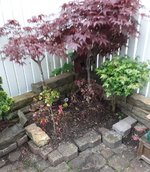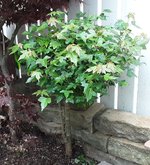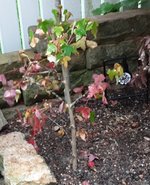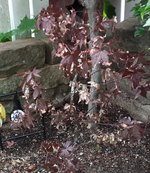Please don't miss the above.
Then maybe you shouldn't comment. This is textbook Japanese Maple growth habit
The Fact that I haven't owned a maple with this shitty growth habit is testament to how easy it can be for someone to knot own one.
The pictures are such that if you haven't seen this poor growth for Yourself, you could easily chalk it up to poor pruning and maintenance.
Poor Ficus Benjamin.


Good ficus Benjamin.


Poor Siberian Elm, recently cleaned up in the Frelms thread, so, you actually have to look at the older cut growth to see the poor habit. And holey branch.


Good Siberian Elm.

I have studied every Japanese maple I've ever come across. Not just looked at, but studied.
I have never ever ever ever in the landscape or in a pot, seen that 4 thing this OP maple is jutting out.
More important is my in depth study of old pruning places, and recognition of subsequent growth, which allows an understanding of what does what. I put much effort into these studies.
I have never seen a pruning that would account for that growth, without the assistance of this poor growth habit.
I have kept this potted Freemani for some time.

And kept a larger specimen I collected and put in the ground to study for I believe 2 growing seasons.
My potted one isn't very vigorous.
The one in the ground was much more vigorous, throwing 6 buds at each node.
Even if I "lost the battle" with that vigorous one, it would never have ended up looking like this, without that extra shitty growth habit.
If we assume folks were smart enough to only utilize good growth habits from the beginning, we can see how rare it would be for us to find Japanese Maples with this growth habit.
Also, dude is on Canada. My Elms from Frary have this growth.
Perhaps it is a simple adaptation to a shorter growing season that makes plants do this. It makes perfect sense. More foliage, quicker, without the need to extend much, which keeps from winter dieback.
Please don't try to shut down conversations like Adair. It's terribly poor form.
Sorce












